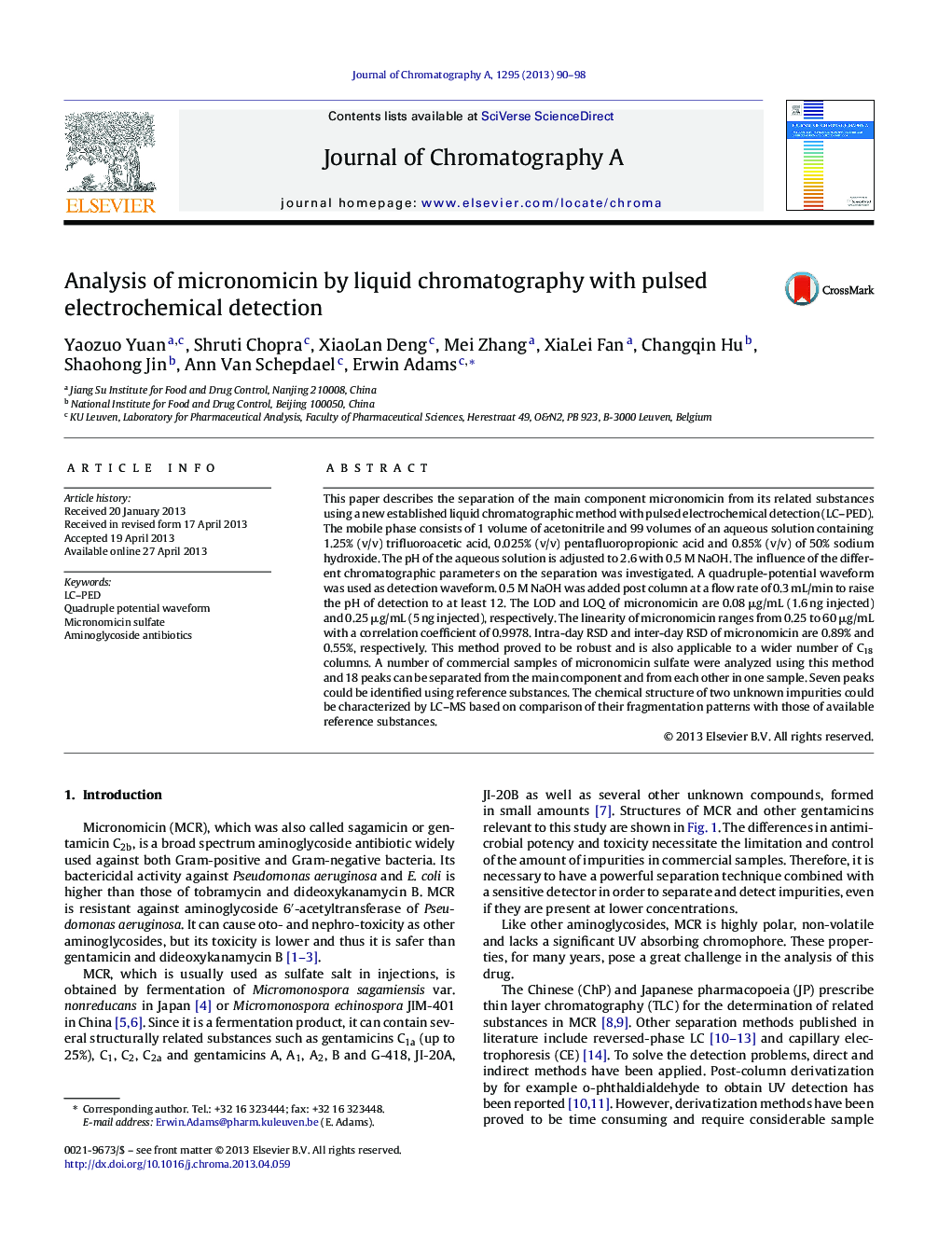| کد مقاله | کد نشریه | سال انتشار | مقاله انگلیسی | نسخه تمام متن |
|---|---|---|---|---|
| 1201644 | 1493631 | 2013 | 9 صفحه PDF | دانلود رایگان |

• An LC–PED method was established for the analysis of MCR and its related substance.
• A quadruple-potential waveform was selected as detection waveform.
• Two main unknown impurities were characterized by LC–MS.
• 9 of 18 impurities detected in the chromatogram were located.
This paper describes the separation of the main component micronomicin from its related substances using a new established liquid chromatographic method with pulsed electrochemical detection (LC–PED). The mobile phase consists of 1 volume of acetonitrile and 99 volumes of an aqueous solution containing 1.25% (v/v) trifluoroacetic acid, 0.025% (v/v) pentafluoropropionic acid and 0.85% (v/v) of 50% sodium hydroxide. The pH of the aqueous solution is adjusted to 2.6 with 0.5 M NaOH. The influence of the different chromatographic parameters on the separation was investigated. A quadruple-potential waveform was used as detection waveform. 0.5 M NaOH was added post column at a flow rate of 0.3 mL/min to raise the pH of detection to at least 12. The LOD and LOQ of micronomicin are 0.08 μg/mL (1.6 ng injected) and 0.25 μg/mL (5 ng injected), respectively. The linearity of micronomicin ranges from 0.25 to 60 μg/mL with a correlation coefficient of 0.9978. Intra-day RSD and inter-day RSD of micronomicin are 0.89% and 0.55%, respectively. This method proved to be robust and is also applicable to a wider number of C18 columns. A number of commercial samples of micronomicin sulfate were analyzed using this method and 18 peaks can be separated from the main component and from each other in one sample. Seven peaks could be identified using reference substances. The chemical structure of two unknown impurities could be characterized by LC–MS based on comparison of their fragmentation patterns with those of available reference substances.
Journal: Journal of Chromatography A - Volume 1295, 21 June 2013, Pages 90–98